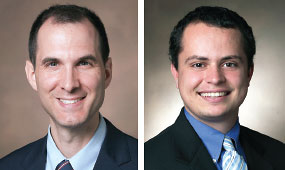The Case for Moving Forward on Eliminating X-Waiver

During the final days of the Trump presidency, the administration announced elimination of the buprenorphine X-waiver requirement. (“X-waiver” refers to the special Drug Enforcement Administration [DEA] license required by the Drug Addiction Treatment Act of 2000 that allows health care professionals to prescribe buprenorphine to outpatients for treatment of opioid use disorder [OUD].) However, only two weeks later, the incoming Biden administration surprised many by reversing the decision due to legal and procedural barriers to its implementation. Though this about-face means the X-waiver will live on for now, once these barriers are addressed, we believe the Biden administration should quickly move forward with its elimination.
Many arguments for X-waiver elimination have been advanced recently, one of the most notable being that although buprenorphine is safer than full opioid agonists, prescribing them requires no additional certification. Furthermore, as noted by Kevin Fiscella, M.D., M.P.H., and colleagues, X-waiver elimination would expand buprenorphine access by decreasing provider fears of DEA scrutiny, easing the process for physicians to find cross-coverage, and providing patients a surer path to buprenorphine initiation when transitioning between emergency rooms, inpatient units, and correctional facilities. X-waiver elimination might also reduce nursing home refusal of patients on buprenorphine. Finally, expanded access may decrease buprenorphine diversion.
Some have argued that since surveyed physicians don’t frequently cite the X-waiver as an obstacle to buprenorphine prescribing—and nearly half of X-waiver holders don’t even prescribe buprenorphine—elimination is unlikely to meaningfully expand OUD treatment. However, stigma consistently ranks high among obstacles cited by physicians, and we believe that the X-waiver’s very existence perpetuates stigma by reinforcing the notion of OUD as being totally distinct from other diseases, preventing the kind of primary care expansion of OUD pharmacotherapy previously witnessed in France and elsewhere.
Regarding underprescribing by those with X-waivers, we shouldn’t dismiss the possibility that the X-waiver itself may be significantly contributing to this by limiting trainee exposure to buprenorphine prescribing. Surveys of family practice physicians and psychiatrists show that experience with buprenorphine during residency significantly increases the odds of buprenorphine prescribing post-residency. However, only 23% of internal medicine, family medicine, and psychiatry residency training directors report that their programs encourage or require obtaining an X-waiver, with a lack of waivered preceptors being the most frequently cited barrier to expansion. This regulatory barrier makes it extremely difficult for trainees to create new buprenorphine preceptors through “teaching up,” which occurs when enthusiastic younger physicians disseminate novel clinical practices to older physicians.
Of course, as with any regulatory change, there would likely be downsides to X-waiver elimination, perhaps the most serious of which would be that generalists newly empowered with buprenorphine prescribing ability would face pressure to overprescribe. However, generalists already face such pressure for many medications. Efforts to address such pressure have helped fuel quality initiatives in areas like chronic pain management, which has included increased education among primary care trainees on multimodal pain treatments and more thoughtful partnerships with pain specialists. Therefore, increased pressure to prescribe buprenorphine might also motivate generalists for more comprehensive education on OUD as a brain disease and also inspire similar partnerships with addiction specialists.
We may encounter other unexpected benefits of X-waiver elimination as well. For example, medicine might face increasing pressure to improve addiction training, and addiction specialty societies might also expand efforts to help generalists and patients recognize high-quality treatment.
Finally, because we could dispel the misconception that having an X-waiver confers expertise in addiction medicine, eliminating it might encourage other specialties to rely on addiction specialists for addiction treatment education and assistance with complex cases.
If we eliminate the X-waiver, we should replace it by expanding OUD-focused medical education, particularly that delivered by addiction specialty societies (through the Providers Clinical Support System; among its partners are the American Academy of Addiction Psychiatry and APA). Furthermore, we should call for new OUD training requirements for all DEA license applicants, already proposed in bipartisan legislation like the Medication Access and Training Expansion (MATE) Act introduced by Rep. Lori Trahan (D-Mass.).
In taking these actions, we may find that physicians of all types will become better equipped to treat and prevent OUD, addiction specialists will be more frequently called upon to provide education and consultation on complex addiction cases, and patients with OUD will face fewer barriers to treatment with evidence-based pharmacotherapy across health care settings. ■
“Buprenorphine Deregulation and Mainstreaming Treatment for Opioid Use Disorder: X the X Waiver” is posted here.
“Training in Office-Based Opioid Treatment With Buprenorphine in U.S. Residency Programs: A National Survey of Residency Program Directors” is posted here.
The Providers Clinical Support System can be accessed here



